ARTICLE
Bhuri Bai (b. c. 1965)
After getting married around the age of sixteen, Bhuri Bai moved to Bhopal with her husband Johar Singh, where they both worked as daily wage labourers in construction. She was working on the site of the arts complex Bharat Bhavan when the artist and then-director of the Roopkankar Museum there, Jagdish Swaminathan, noticed some stones she had painted. As part of his ongoing mission to discover and nurture artistic talent from the region’s tribal heritage, he encouraged her to paint more, providing her paper, paints and brushes, and buying her finished work. Around this time, in the early 1980s, Bharat Bhavan and Swaminathan’s team were also providing impetus and support to other Adivasi artists, such as Jangarh Singh Shyam from the Pardhan Gond community and Lado Bai and Pema Fatya from Bhuri Bai’s own community. The shift from stones and mud walls to the smooth surface of paper, and from handmade to ready-made colours, was a significant, at times challenging, transition; she also found it difficult to get used to paintbrushes. Initially, despite the range of colours newly available to her, Bhuri Bai continued to use the earthy reds, yellows, blacks and greens that she was accustomed to, only moving to brighter colours in the 1990s. Meanwhile, she began to work with a broader range of subjects that referenced her life in the village, and various perspectives and forms. All of this culminated in a unique style of experimental and figurative painting, incorporating elements of Pithora murals into her own visual language.
In a career spanning four decades, Bhuri Bai’s subject of choice has been the life of the Bhil community in Madhya Pradesh, particularly her childhood memories of Pithol. In addition to depicting the flora and fauna of her native forests, the hutments, granaries and other architecture of her village, as well as its daily life, festivities and dances, her work incorporates the songs, folklore, rituals and tattoo traditions of her community. She also integrates diverse palettes and schemes alongside the traditional visual grammar of Pithora painting, which comprises elongated animal and human forms, elaborate patterns, stippled dots and coiling motifs. As her career took her to more cities in India and abroad, she started painting scenes that included motifs and elements from contemporary urban and industrial society such as buses, cars, aeroplanes and televisions. Today, Bhuri Bai’s style and subject are a culmination of her various cultural influences and personal experiences as well as her many experiments with form. Her paintings render three-dimensional spaces solely through strategic vertical and horizontal placement, without the use of devices such as optical perspective and scale.
Among her most renowned works are her murals on the 21-metre-high wall at the Madhya Pradesh State Tribal Museum, in which she narrates the story of her own life. She is also trained in hut-building, a practice she learnt from her mother, Jhabbu Bai. She was involved in the construction of the Bhil hut in the Indira Gandhi Rashtriya Manav Sangrahalaya, Bhopal, India’s largest ethnographic museum. Together with fellow Bhil artist Lado Bai, she worked on a few paintings that were photographed by Jyoti Bhatt in 1983 and later published in the Bharat Bhavan publication The Perceiving Fingers (1987).
Bhuri Bai’s work has been extensively exhibited in museums and galleries within India, as well as in Europe, Australia and the United States. It has been featured in landmark exhibitions such as Now That the Trees Have Spoken (2009) at Pundole Art Gallery; Other Masters of India at Musée du Quai Branly, Paris, curated by Jyotindra Jain and Jean-Pierre Mohen (2010); and the second iteration of Vernacular in the Contemporary (2010) curated by Jackfruit Research and Design led by Annapurna Garimella. Her work is part of the permanent collections at Roopankar Gallery, Bharat Bhavan and National Crafts Museum, New Delhi. A comprehensive virtual exhibition of her work, Bhuri Bai: My Life as an Artist, was organised by the Museum of Art and Photography, Bengaluru in 2020. Produced in collaboration with Bhuri Bai, the exhibition draws on first-hand interviews with her, and includes a narration of her life and career in her own words.
In 1986, the Government of Madhya Pradesh awarded her with the state’s highest honour for artists, Shikhar Samman, followed by the Devi Ahilya Samman in 1998 and the Rani Durgavati Award in 2009. In 1999, she accompanied Jangarh Singh Shyam in a presidential delegation to an art workshop in Australia organised with Aboriginal artists such as Kathy and Djambawa Marawili. Her accolades also led to her appointment as resident artist at the Adivasi Lok Kala Academy, Madhya Pradesh in 2002. In addition to creating paintings on paper, canvas, wood, mud pots and textiles, she has also illustrated books such as Bhili Kathayein (2005) and Bhil Janjateeya Geet (2006). She was awarded the Padma Shri by the Government of India in 2021.
At the time of writing, Bhuri Bai lives and works in Bhopal, where she is resident artist at the Madhya Pradesh Tribal Museum.
Bibliography
Bhuyan, Avantika. “A Padma Shri for Bhuri Bai, the First Woman Artist from the Bhil Community to Paint on Paper.” Mint Lounge, January 21, 2021. https://lifestyle.livemint.com/how-to-lounge/art-culture/a-padma-shri-for-bhuri-bai-the-first-woman-artist-from-the-bhil-community-to-paint-on-paper-111611659780524.html.
D’Mello, Rosalyn. “Bhuri Bai: The Arc of Living.” Open, February 19, 2021. Accessed November 9, 2023. https://openthemagazine.com/art-culture/bhuri-bai-the-arc-of-living/.
Indira Gandhi National Centre for Arts. “Bhuri Bai of Pitol – Bhil Artist of Madhya Pradesh.” Accessed October 22, 2021. https://ignca.gov.in/divisionss/janapada-sampada/tribal-art-culture/bhil-artists-of-madhya-pradesh-and-rajasthan/bhuri-bai-of-pitol/.
Karelia, Gopi. “Padma Shri Artist from Madhya Pradesh Once Worked as a Daily Wager, Earning Rs. 6.” The Better India, January 27, 2021. https://www.thebetterindia.com/247963/bhuri-bai-madhya-pradesh-padma-shri-2021-winner-pithora-paintings-inspiring-india-gop94/.
Mukherjee, Surela. “A Mural of Life Itself.” Deccan Herald, March 28, 2021. https://www.deccanherald.com/sunday-herald/sunday-herald-art-culture/a-mural-of-life-itself-966825.html.
Museum of Art and Photography. “Bhuri Bai: My Life as an Artist.” Online Exhibition. Accessed October 29, 2021. https://bhuri-bai.webflow.io/bhuri-bai-map.
Pundole Art Gallery. “Bhuri Bai.” Artists. Accessed November 9, 2023. https://www.pundoleartgallery.in/details/bhuri-bai.
Saffronart. “Bhuri Bai.” Accessed October 22, 2021. https://www.saffronart.com/artists/bhuri–bai.
Sarmaya. “First of Her Tribe.” Spotlight: Art+Feminism. March 22, 2019. Accessed November 9, 2023. https://sarmaya.in/spotlight/first-of-her-tribe/.
Sarmaya. “Untitled, 2018–19.” Collections: Indigenous & Tribal Art. Accessed October 22, 2021. https://sarmaya.in/objects/indigenous-tribal-art/untitled-bhil-painting/.




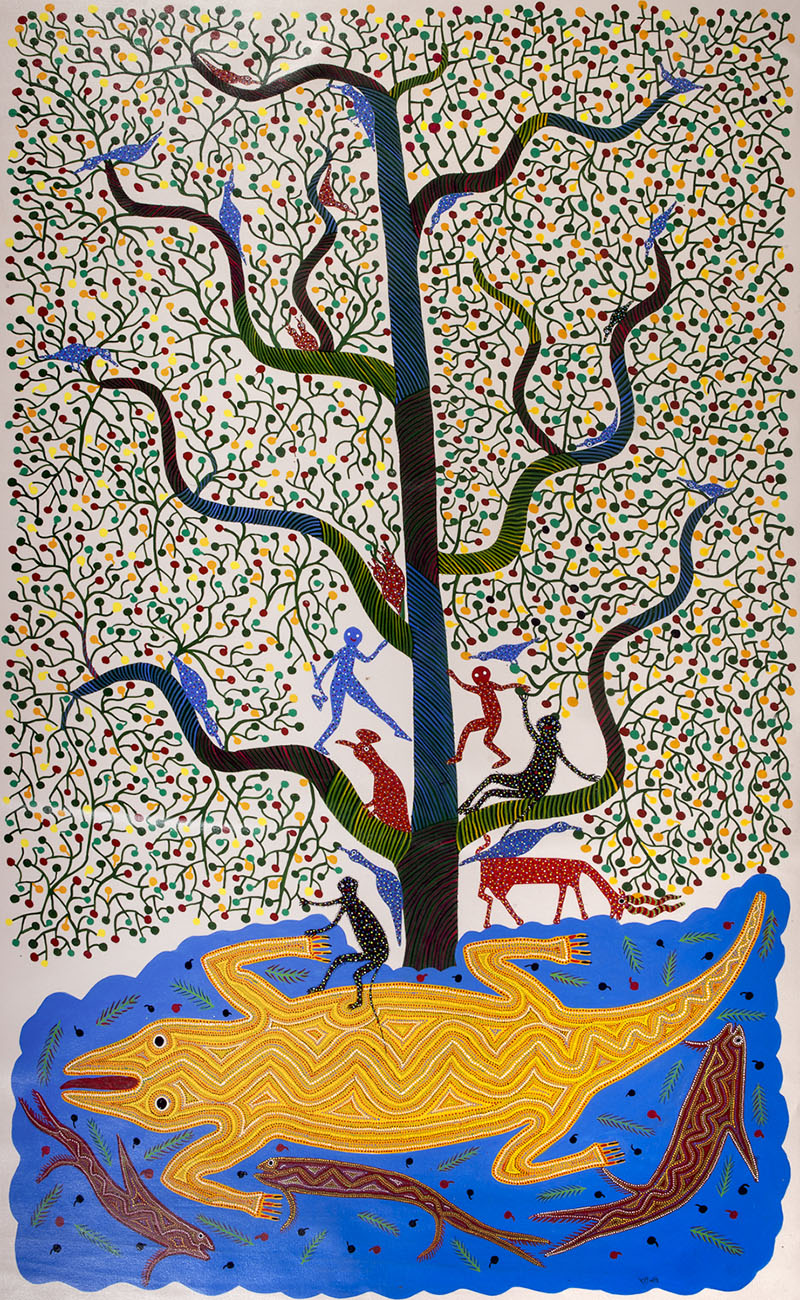
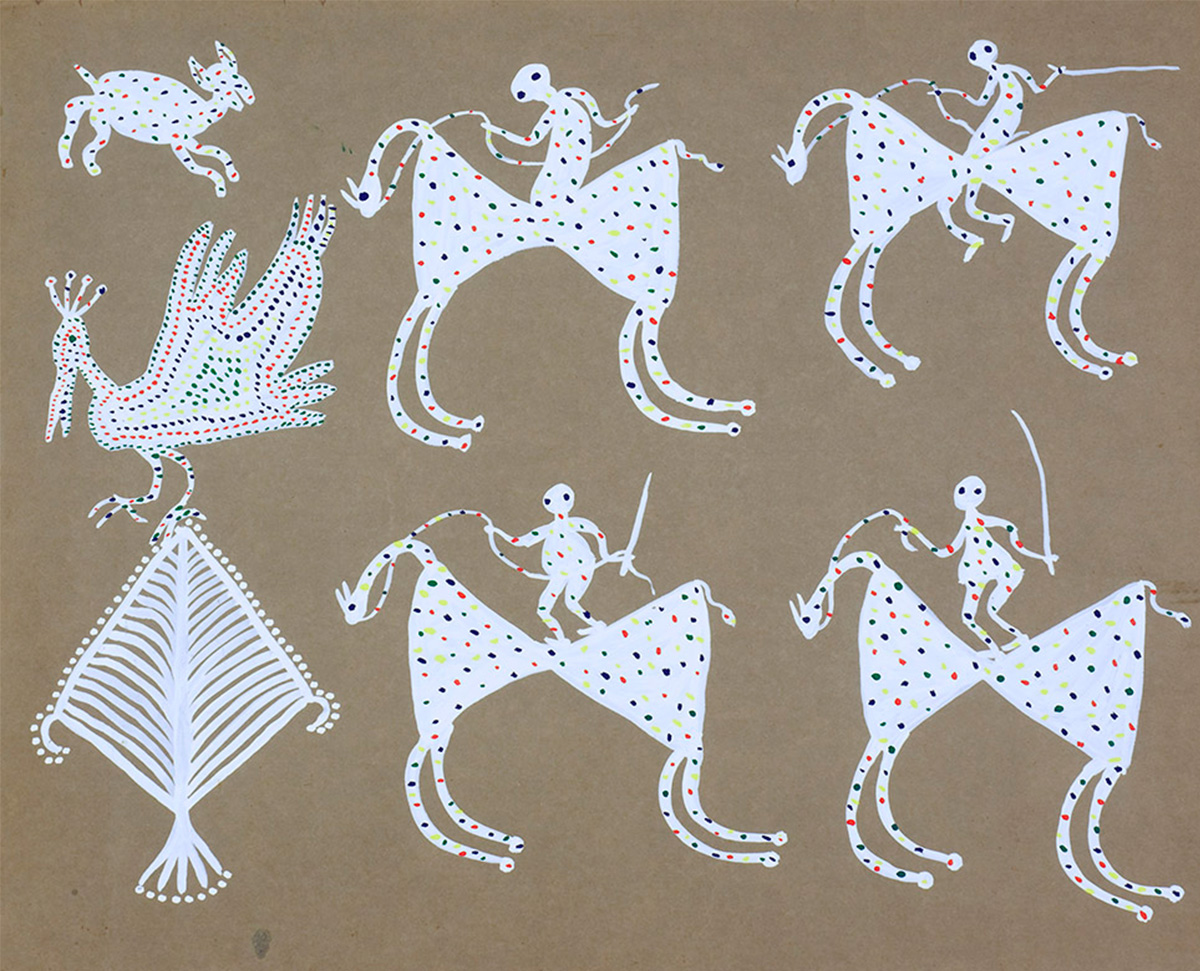
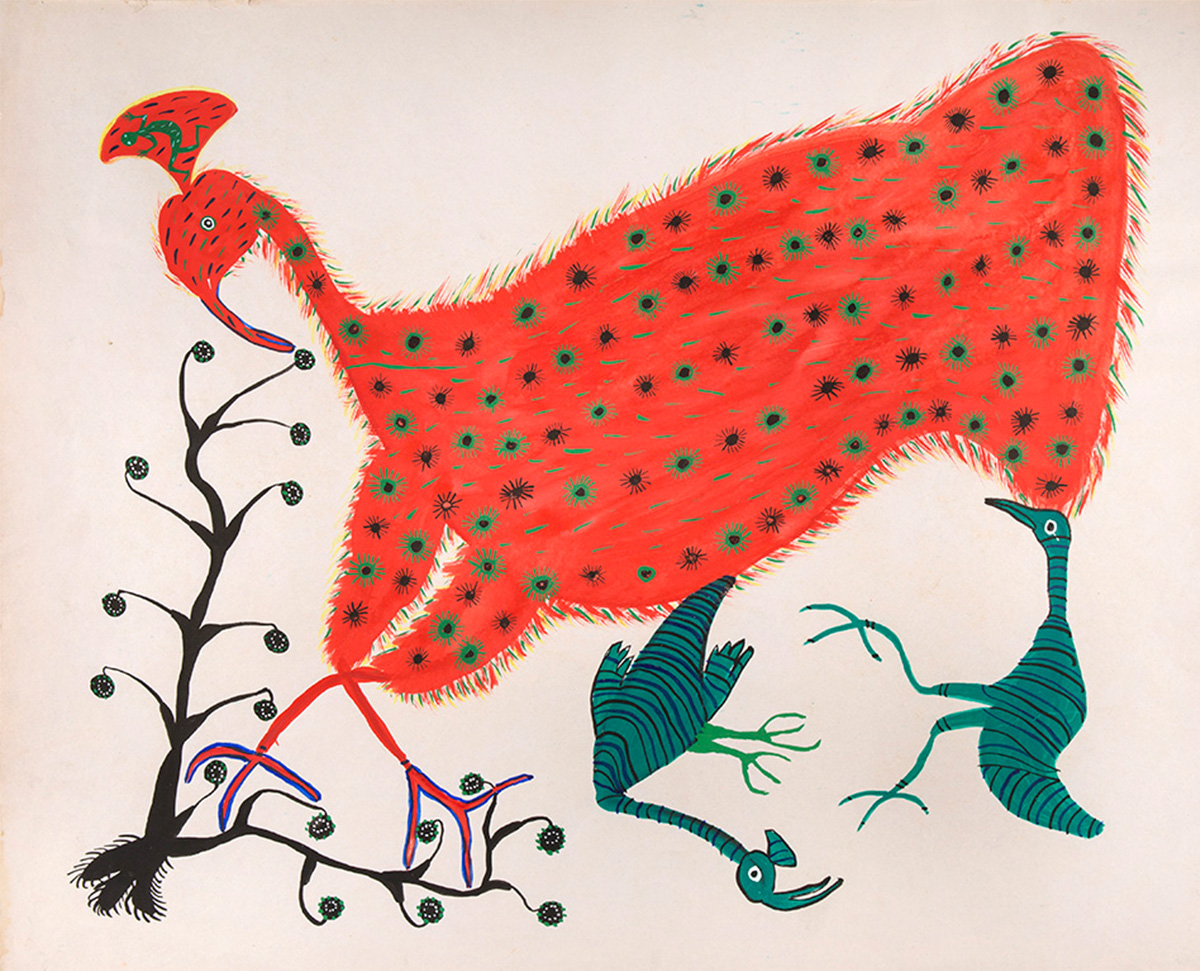
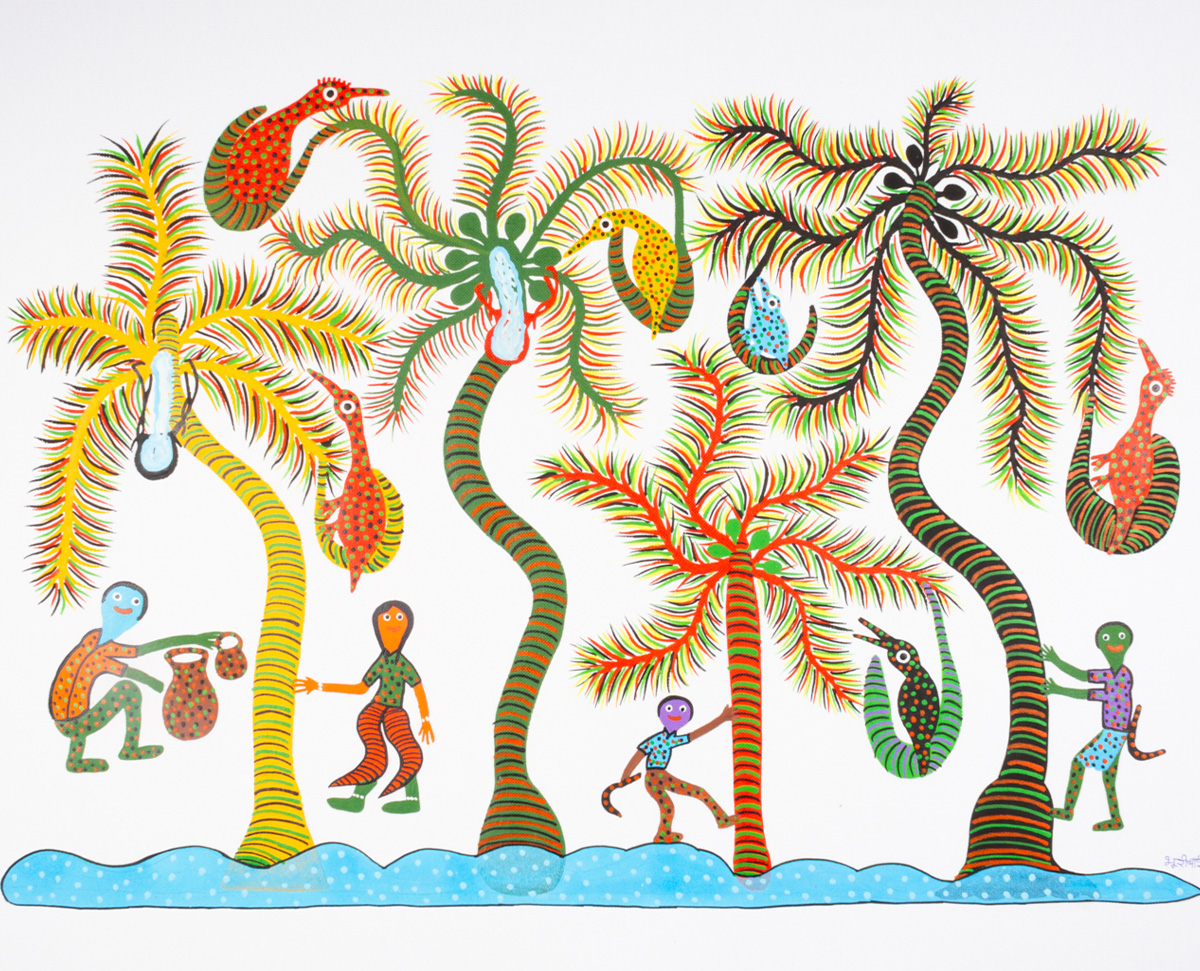
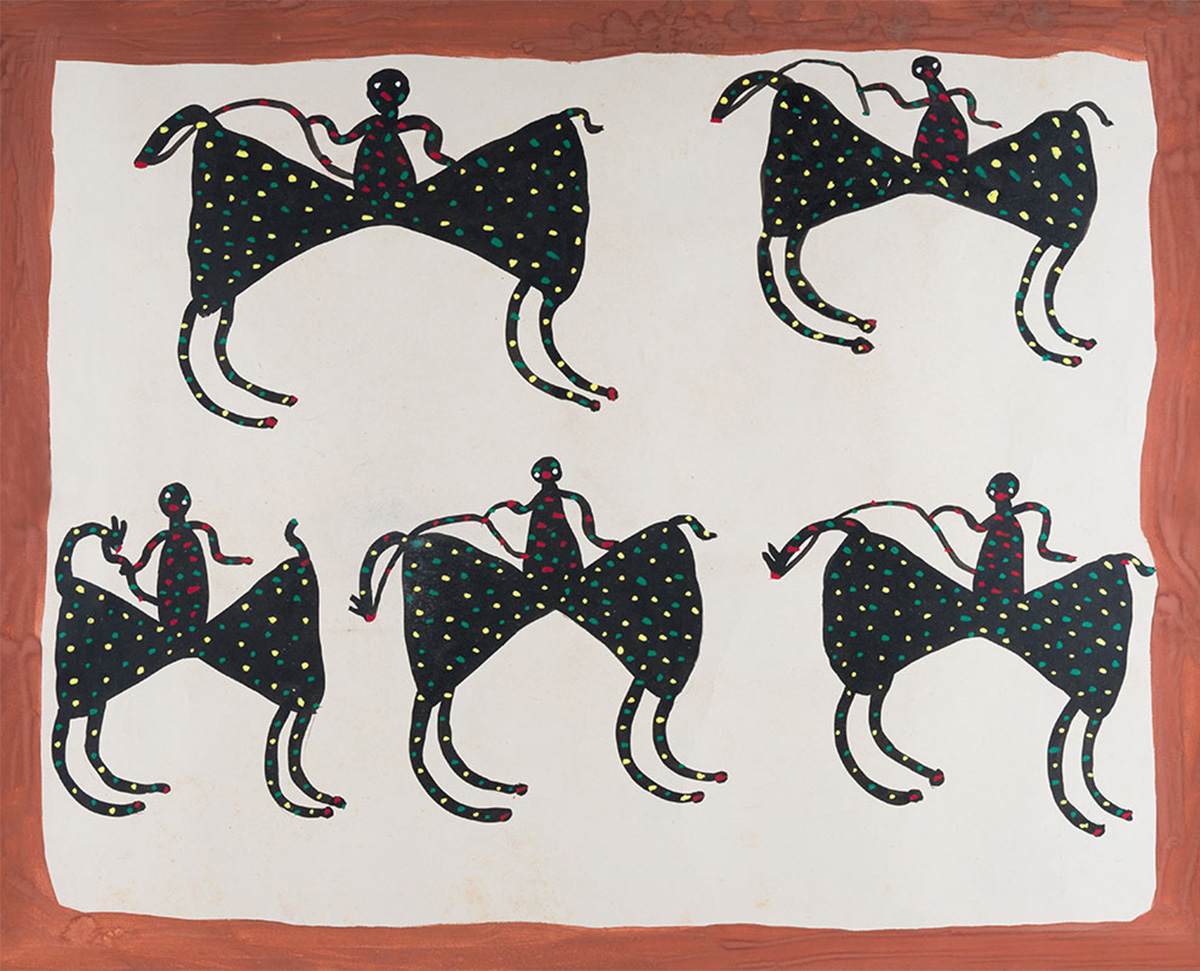

![The façade of the Maneckji Seth Agiary, a Zoroastrian fire temple, is a standout example of the popularity of the Persian Revival Style in Western India in the 19th and 20th centuries. This style was often seen in the architectural patronage of the Parsis, who emerged as one of the most influential mercantile communities of British India. Popular motifs of this style, like the mythical lamasus (winged bulls with human heads) and the faravahar (a winged guardian spirit in Zoroastrianism), drew on the historical art and architecture of the Achaemenid and Sasanian empires from sites like Persepolis, Bisotun, Taq-e Bostan, Naqsh-e Rostam and Naqsh-e Rajab in Persia.
The Parsi community’s adoption of this style occurred largely due to their networks of global commerce and politics, allowing them to access and translate research of ancient Persia into visible symbols that underlined their association with antiquity, imperial power, and art.
نمای آتشکدهی زرتشتی مانِکجی سِت نمونهی بارزی از رواج سبک «احیای [معماری] ایرانی» در غرب هند طی سدههای نوزدهم و بیستم است. این سبک غالباً در بناهایی دیده میشد که پارسیان، از بانفوذترین جوامع بازرگان در هند بریتانیا، بانیشان بودند. نقشمایههای محبوب این سبک، مانند گاو بالدار اساطیری (لاماسو) و فَروَهَر (روح بالدار نگهبان در دین زرتشت)، برگرفته از هنر و معماری شاهنشاهی هخامنشی و ساسانی، در جاهایی چون تخت جمشید و بیستون و طاق بستان و نقش رستم و نقش رجب، بود.
اقتباس جامعهی پارسیان از این سبک بسیار مرهون روابط گستردهی تجاری و سیاسی آنها بود که دسترس به پژوهشها دربارهی ایران باستان و برگردانیدن آنها به نمادهای بصری را ممکن میکرد و بر پیوند پارسیان با دوران باستان و قدرت شاهنشاهی و هنر تأکید میکرد.](https://mapacademy.io/wp-content/plugins/instagram-feed/img/placeholder.png)
